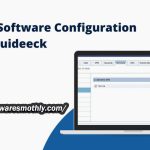Zillexit Software provides a wide range of apps that are intended to simplify different methods of organization. Every application in Zillexit, from communication and task management tools to advanced analytics and reporting features, is designed to improve productivity and teamwork. Expect user-friendly interfaces that make complicated operations simpler, guaranteeing smooth integration .Businesses may achieve operational excellence and increase efficiency using Zillexit’s applications, whether they are used for performance monitoring, resource allocation, or project tracking.
Types of Software Applications
Software applications in Zillexit can generally be categorised into three main types:
- Desktop Applications: These are programs installed and run on individual computers or laptops, offering offline functionality and often robust features tailored for specific tasks.
- Web Applications: Accessible through web browsers, web applications in Zillexit operate on remote servers, enabling users to access and interact with them via the internet. They are convenient for collaboration and data sharing among multiple users.
- Mobile Applications: Designed for smartphones and tablets, mobile applications within Zillexit provide mobility and convenience, leveraging device-specific features like GPS and touchscreens for enhanced user experience.
Testing in Zillexit Software
Testing is an essential step in the development of Zillexit software that provides operating and trustworthiness. Software system testing is a thorough assessment of each application’s security, compliance with various environments, and performance. Before installation, this procedure enables in finding and fixing any errors or problems, ensuring a positive user experience.
How Zillexit Software Ensures Safe Data Storage
Here are several points on how Zillexit Software ensures safe data storage:
- Encryption: Zillexit Software employs robust encryption techniques to encode data stored within its systems. Encryption ensures that even if data is intercepted or accessed without authorization, it remains unreadable without the correct decryption key.
- Access Control: Zillexit implements strict access control mechanisms to regulate who can access stored data. This includes authentication methods such as passwords, biometrics, or multi-factor authentication (MFA), ensuring only authorised personnel can view or modify sensitive information.
- Regular Backups: To prevent data loss due to unforeseen circumstances such as hardware failure or cyberattacks, Zillexit Software regularly backs up stored data. These backups are stored securely and can be used to restore data to its previous state in case of a disaster.
- Data Masking: For additional security, sensitive data stored in Zillexit Software may undergo data masking. This technique replaces sensitive information with fictitious but realistic data, ensuring the confidentiality of the original data while allowing authorised users to perform necessary operations.
- Secure Transmission: When data is transmitted to and from Zillexit Software, secure protocols such as HTTPS, SSL/TLS are used to encrypt data during transit. This protects data from interception by unauthorised parties while it travels over networks.
- Monitoring and Auditing: Zillexit Software monitors data storage activities continuously and conducts regular audits to detect any unauthorised access or anomalies. Monitoring helps ensure compliance with security policies and regulations while auditing provides insights into potential security gaps that need addressing.
- Physical Security: Physical security measures are also crucial for data stored by Zillexit Software. Servers and data centres where information is housed are protected with access controls, surveillance systems, and other physical security measures to prevent unauthorised access or tampering.
- Data Retention Policies: Zillexit Software implements data retention policies that define how long different types of data are stored and when they should be securely deleted. This helps minimise the risk of storing unnecessary data and reduces exposure to potential breaches.

What are the 10 examples of application software?
Application software refers to programs designed to perform specific tasks for users. Here are ten examples of application software:
- Microsoft Office Suite: Includes Word (word processing), Excel (spreadsheets), PowerPoint (presentations), and Outlook (email and calendar).
- Adobe Photoshop: Graphic editing software used for creating and editing images and photos.
- Google Chrome: A web browser used for accessing and navigating the internet.
- Zoom: Video conferencing software for online meetings, webinars, and virtual events.
- Slack: Collaboration hub for teams, offering messaging, file sharing, and integration with other tools.
- QuickBooks: Accounting software for small and medium-sized businesses, used for invoicing, payroll, and financial reporting.
- Spotify: Music streaming application for listening to music, podcasts, and other audio content.
- AutoCAD: Computer-aided design (CAD) software used by architects, engineers, and designers for creating 2D and 3D models.
- WhatsApp: Messaging application for text, voice, and video communication between individuals and groups.
- Trello: Project management tool that uses boards, lists, and cards to organise tasks and collaborate with teams.
Advantages of Zillexit Software
Zillexit software offers several advantages:
- Enhanced Efficiency: Through streamlined processes and automation, Zillexit software enhances organisational efficiency and productivity.
- Improved Collaboration: With centralised data storage and seamless communication tools, Zillexit software fosters collaboration among team members.
- Scalability: Zillexit software solutions can scale according to organisational needs, accommodating growth and evolving requirements effectively.
Conclusion
Zillexit Software has a strong track record of improving productivity in a range of organizational activities. Zillexit simplifies a wide range of operations, including resource allocation, project management, and communication, with its user-friendly interface. Customers appreciate its capacity to eliminate monotonous procedures, concentrate information, and promote real-time collaboration—all of which maximize workflow efficiency. All things considered, Zillexit Software proves to be a useful resource for companies looking to increase output and efficiently simplify processes. Learn More.
FAQs about Zillexit Software
Data in Zillexit software is typically stored using secure databases and file systems, employing encryption techniques to ensure confidentiality and integrity.
Software system testing in Zillexit involves assessing applications for functionality, performance, and security to ensure they meet specified requirements.
Testing in Zillexit software is essential to identify and fix bugs or issues before deployment, ensuring reliability and user satisfaction.
To prevent hacking, Zillexit software implements robust security measures such as firewalls, intrusion detection systems, and regular security updates to mitigate vulnerabilities.





